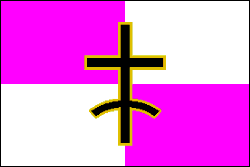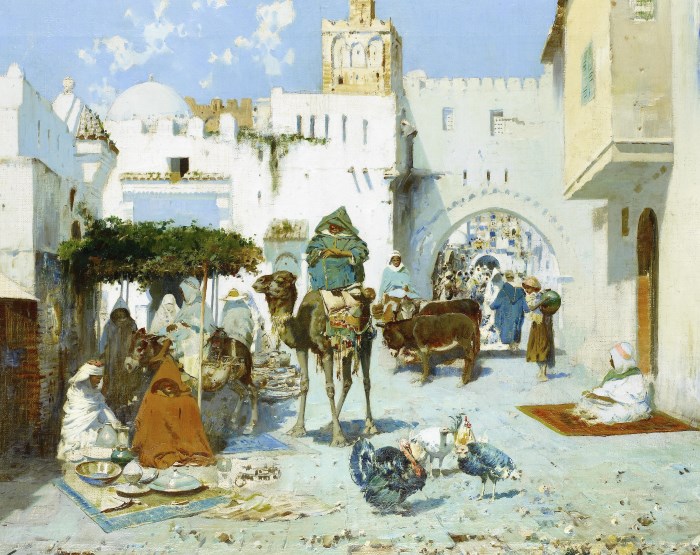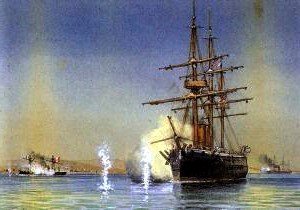  EsrayetteEsrayette is an overseas territory of the Hiverian Republic, situated at the African west coast. 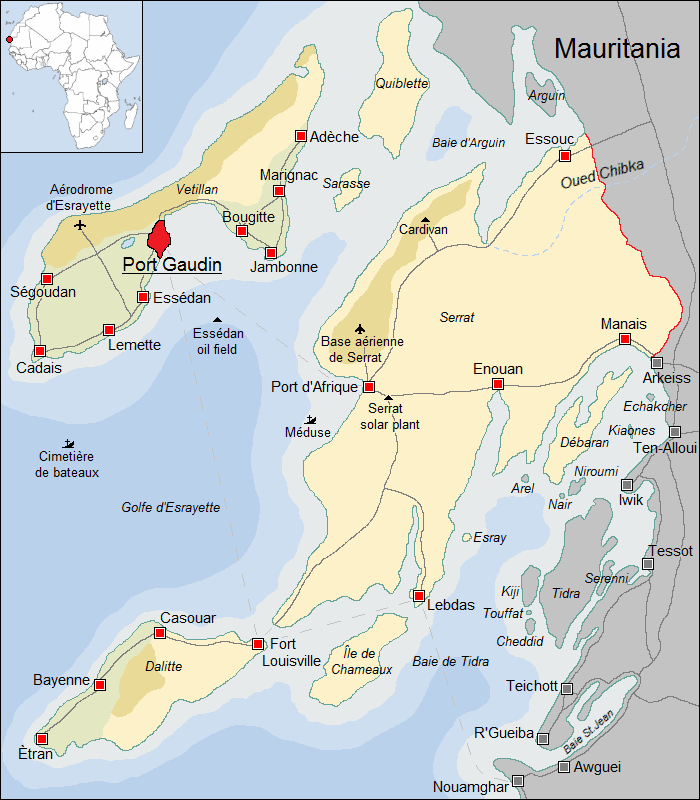 General information Esrayette (Tamaxluk: t-esray-et / ⵜⴻⵛⵔⴰⵢⴻⵜ) is in the same time zone as European Hiveria: Coordinated Universal Time (UTC), also known as Greenwich Mean Time (GMT). The area can be reached by land from Mauritania. There is also a direct flight from the Hiverian capital St. Gérard. Rental cars, bus lines, taxis, ferries and water taxis are available throughout the region. Travelers going into the desert are advised to bring enough water and a guide. Geography Esrayette, also called Îles d'Esrayette (Islands of Esrayette), is located in the Maghreb (North-West Africa) and is situated at the western end of the Sahara. It consists of the Serrat peninsula adjacent to Mauritania and seven islands, of which Vetillan and Dalitte are the largest. The islands are part of Macaronesia and in terms of land area comparable to nearby Cape Verde, although the islands are much closer together and only part of them are habitable. The landscape is dominated by the Sahara and mainly consists of desert. The western islands of Vetillan and Dalitte are more moderate and partly suitable for agriculture. Esrayette has a desert climate and is hot, sunny and dry. Sand storms occur regularly. The average temperature is between 29 and 35 degrees Celsius (84-95 Fahrenheit), with peaks to 46 degrees (115 Fahrenheit). It is slightly cooler and more pleasant on the westernmost islands. Flora and fauna In most of Esrayette there is no or only limited vegetation such as grass, tamarisk, acacia, balsam and spurge. On the western islands the pine, oak and sweet chestnut have been introduced. The area is home to many bird species, such as the flamingo, pelican, Egyptian vulture, tern, Eurasian whimbrel, broad-billed sandpiper, plover, red knot, redshank, bar-tailed godwit, Eurasian spoonbill, reed cormorant and heron. Common mammals are the dromedary, dorcas gazelle, bat, desert fox (fennec), sand cat, African wildcat, common genet, goat, mouse, green monkey and vervet. Many of these species have been introduced later. The same applies to livestock and pets such as sheep, chickens and dogs. Concerning reptiles there are several species of turtles, lizards, skinks, geckos and snakes. The waters surrounding Esrayette are home to the seal, dolphin, porpoise, orca and whale. Invertebrates are represented by crabs, lobsters, butterflies, moths, bees, ants, scorpions and spiders. A species exclusively found in Esrayette is the devil spider (Avicularia diabolicus), belonging to the tarantula family. It has a body length of up to 10 cm (4 inches) and a legspan of up to 28 cm (11 inches). The spider is fast, agressive and defends itself with its urticating hair and poisonous fangs. Because of its preference for shoes, kitchen cupboards and warm beds the devil spider is one of Esrayette's least popular animals. Government
The flag of Esrayette consists of the purple-white checkered Hiverian flag with the Assaque symbol (Tamaxluk: t-assaq-q = unity) on it, which represents the connection between the original Berber population and the Hiverian newcomers. The symbol is a combination of the Latin cross, which represents Hiverian and Christian identity, and the Tifinagh letter "yaz" (ⵣ), the symbol of the Berbers. An estimated 35% of Esrayette's population favours greater autonomy, 10% favours full independence. Three violent groups are active: Esrayette Démocratique (ED, "Democratic Esrayette") views Hiveria as a dictatorship and demands new, fair elections. Esrayette Libre (EL, Free Esrayette) wants an independent state for the Berber population and the Islamic Front for the Liberation of al-Asra (al-jabhat al'iislamiat litahrir al-asra, الجبهة الإسلامية لتحرير الاسرا) wants to turn Esrayette (Arabic: al-Asra) into an Islamic caliphate. Demographics In total, Esrayette has 160,000 inhabitants, of which 60% are Jaunes (European Hiverians) and 40% are Berbers (mainly Tamaxluk and a smaller number of Sahrawi and Imraguen). The Jaunes form a majority on the densely populated islands of Vetillan and Dalitte. The Tamaxluk are the most numerous on the Serrat peninsula. Sahrawi are found in Essouc and the Imraguen mainly live in small fishing communities along the south coast of Serrat. The number of illegal residents in Esrayette is estimated at around 20,000 (11% of the population). The majority of these are from Morocco, Western Sahara, Mauritania, Senegal and Mali. This group is not included in the statistics mentioned. 97% of the population speaks French (Esrayettien), 68% of whom speak it as a first language. 45% speak the native Berber language Tamaxluk, of which 30% as a first language. 10% speak the Arabic dialect Hassaniya, of which 2% as a first language. The main religion is Christianity (90%, of which 92% Catholic, 5% Protestant and 3% other denominations), followed by Islam (5%) and other religions (3%). 2% is not religious. Culture The usual Hiverian holidays are hardly celebrated. More attention is paid to Catholic holidays. On June 10 people celebrate the victory of the Battle of the Gulf (la Bataille du Golfe, 1881), a naval battle that took place in the Golfe d'Esrayette. This day is usually celebrated with good food, live music and a fleet review with historic sailing ships. On August 6, the Anniversary of Esrayette (Anniversaire d'Esrayette) is celebrated; the day on which the area was colonized by Hiveria in 1625. There are street fairs, flea markets, games and music. Nowadays, the celebration is rather sensitive due to its association with colonialism and slavery, as a result of which the party regularly escalates into demonstrations and fights between supporters and opponents. The local cuisine has many originally Hiverian dishes, but often prepared with locally available ingredients such as dates, baobab fruits, lentils, chickpeas, goat meat, camel meat and rice. This has created many new, unique dishes. Much has also been adopted from, for example, Moroccan and Mauritanian cuisine, such as couscous, pastilla, baghrir, harira, tagine dishes, thieboudienne, yassa and mahfe. Mint tea and roselle tea are also popular. The music is strongly influenced by that of the Maghreb and West Africa, often combined with Hiverian chansons. The singing is mainly in French, but there is also music in Tamaxluk. Commonly used instruments are the taghanimt (reed flute), sintir (string instrument), bendir (frame drum) and qaraqib (castanets). Well-known musicians from Esrayette are Jacques d'Ètran and Mamudh Bruelle. The most famous writer of Esrayette is Stéphanie Leroy, important sports are football and kickboxing and the island of Dalitte is known for breeding dalitan dogs; a breed of small, smart dogs with a highly developed hunting instinct. Economy 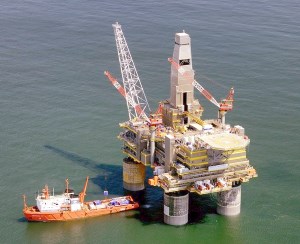 The legal currency is the Hiverian franc (HFR), although the Moroccan dirham (MAD) and the Mauritanian ouguiya (MRU) are also accepted.
The legal currency is the Hiverian franc (HFR), although the Moroccan dirham (MAD) and the Mauritanian ouguiya (MRU) are also accepted.The economy is strong and stable thanks to the existing mineral resources and their efficient exploitation. Much of the revenue comes from the Essédan oil field in the Golfe d'Esrayette, which is operated by the Hiverian company Raffinerie Enboneau. In addition, Esrayette has large reserves of iron ore, smaller reserves of gold and copper and some small natural gas fields. The waters surrounding Esrayette are rich in fish and seafood. At the urging of environmental organizations and as compensation for oil extraction and fishing, Solar Park Serrat was built in 2020, with which the Serrat peninsula can largely meet its own energy needs. Law enforcement and defence The police has drones, helicopters and all-terrain vehicles available for surveillance in the vast desert area. On Serrat the police also has dromedaries. Esrayette is protected by the following military units: History Prehistory The original inhabitants of Esrayette were the Bafour. The Imraguen, who live along the south coast of Serrat, may have descended from them. The first written account about the area dates from the 5th century BC and comes from the Carthaginian explorer Hanno: 'We passed several islands, most of them uninhabited. According to our guides, these were called the "Islands of Destiny", referring to their treacherous shallows. On one of the desert coasts we met an unknown shepherd people, who wore animal skins and lived off their herd and fishing. Their language was unintelligible, but we managed to trade some things with them for food.' In the 3rd century AD the Tamaxluk arrived; a Berber people from the north who were closely related to the Zenata (Berber: Iznaten) and the Tuareg (Berber: Tamasheq). They submitted the Bafour and named the area "t-esray-et" (ⵜⴻⵛⵔⴰⵢⴻⵜ = Islands of Destiny), a literal translation of the Bafour name mentioned by Hanno. The current name Esrayette is a later Frenchification of this. The Cardivan rock carvings also date from the 3rd century and were made by the Tamaxluk. The images show their struggle with the Bafour and some hunting scenes. There are also inscriptions in the Old Libyan script, which up to now cannot be deciphered. Arabs, Almoravids and Europeans From the 8th century onward, Arab nomads appeared in the area. Initially, contact was peaceful, but over time conflicts arose between the Tamaxluk and the increasingly numerous newcomers. In the 11th century, the Tamaxluk were subdued by the Almoravids, who ruled over Esrayette in the 11th and 12th centuries. Islam was also introduced during that period, which gradually became the dominant religion in the following centuries. The Portuguese appeared in the 15th century, but they mainly concentrated on the island of Arguin and nearby Cape Verde. Dutch, English, French and Brandenburgers also visited the area, although their attention also remained focused on Arguin because the rest of Esrayette was seen as a worthless sand heap. Pirate stronghold However, the treacherous coasts of Esrayette provided an excellent hiding place for pirates. Unlike the Europeans, they were familiar with the area and knew exactly where or not to sail. They struck with fast, light ships and then disappeared between the sandbanks, where they could no longer be followed. Their loot consisted of goods, weapons and slaves. In the 16th and 17th centuries, the current Adèche, Manais and Lebdas developed into pirate strongholds, which became an increasingly serious threat to trade in the area. In 1612, Portugal attempted to halt the pirates with a combined attack by land and sea: Adèche was neutralized but this success could not be repeated in Tidra Bay, where the Portuguese fleet nearly got stuck and the land forces ended up in a sandstorm.
Competitors on the horizon In 1624, the Hiverian trading ship "Cheval de Mer" was attacked by pirates. After her surrender, the cargo was stolen, the crew sold as slaves and the ship set on fire. This created an opportunity for king Louis I Concarneau, as the public dissatisfaction that came with it diverted attention from many domestic problems and it also gave him a reason to annex a piece of West Africa, where, at that time, lots of money was being made by trading slaves, ivory, gold and pepper. In the summer of 1625, a Hiverian fleet appeared in Tidra Bay, consisting of light ships of such shallow draft that they could navigate the waters of Esrayette without getting stuck. Hiveria had learned from the misfortunes of the Portuguese and deprived the pirates of one of their main advantages. The pirate fleet was sunk and their strongholds Lebdas and Manais captured. On August 6, 1625, Esrayette formally became a colony of Hiveria. Hiverian colony In the early years, Esrayette focused mainly on the Transatlantic slave trade. Portugal, which had annexed the island of Arguin for the same purpose, was not happy with this competition and opposed the new colony in every way. Over time, Esrayette therefore began to focus on other sources of income, such as fishing and the trade in gum arabic. The first Hiverian settlers on Esrayette were traders and adventurers. They formed a small minority in the already scarcely populated arid land. This changed when Hiveria introduced new irrigation and farming techniques; most of Esrayette turned out to be too dry, but the islands of Vetillan and Dalitte could be largely made livable by a new irrigation system similar to the Madeiran levadas. The new, fertile land attracted Hiverian farming families and a population explosion ensued, ultimately making the newcomers more numerous than the native population. Old Tamaxluk villages developed into European settlements and new towns were also founded, such as Port Concarneau, today's Port Gaudin. Catholicism became the dominant religion, partly because Hiveria also actively spread it among the Tamaxluk. Because of this, Islam was largely expelled from Esrayette. Speaking Arabic, which had gained more and more ground in the previous centuries, was actively discouraged. Tamaxluk, the language of the Berber population of the same name, remained tolerated. However, French became the new dominant language in Esrayette, especially when it became mandatory in education. The purpose of all this was to Hiverianize the original population and thus increase their loyalty. Les Jaunes After the Hiverian Revolution of 1794, Port Concarneau, which was named after the Hiverian royal family, was renamed Port Gaudin, referring to President Guillaume Gaudin. At the time, Esrayette was used as a penal colony, to where nobility, clergy, and other supporters of the old system were deported. People who once had a high social position lost their privileges and were exiled to a remote area, where a poor life as a farm worker awaited them. Because of their new activities, they were often covered with yellow desert sand. In Hiveria they were therefore often mockingly called "les jaunes" (the yellows). A majority of the settlers in Esrayette descend from these exiles, eventually making "Jaune" a reappropriated nickname for all European residents of Esrayette. The Jaunes are usually conservative, traditional and religious in nature. They feel disadvantaged by Hiveria and live at odds with the Tamaxluk, who regard them as intruders. Usually they consider themselves to have fallen between two stools. The Battle of the Gulf
However, the fight had lasted too long; the Liberté and Espadon had quickly turned and managed to intercept the Frilandic attack fleet on June 10, 1881 in the Golfe d'Esrayette. The three cruisers had suffered serious damage in their attack on Port Gaudin, giving the Hiverians an advantage. In the ensuing naval battle, the Hriþar, Ainhaid and Tigar were all three sunk, with 300 Frilandic sailors drowning and 600 captured. Hiveria only lost the Liberté and about 50 men. After the battle, the Espadon had to retreat to Hiveria for repairs. Although Friland had achieved its goal, it suffered such heavy losses that Hiveria could be considered the winner of the Battle of the Gulf.  La belle époque
La belle époqueAt the end of the 19th century, Esrayette's cultural life blossomed and there were major developments in the fields of music, theater, sports and art. European jugendstil mixed with Maghreb architecture and Port Gaudin developed a vibrant nightlife. Hiveria also abolished slavery during this period. In 1904 Mauritania became a French colony, causing disagreement between Hiveria and France over the exact border between Esrayette and Mauritania. The border that was eventually agreed upon has remained to date. Decolonization In 1961 president Lejeune allowed all Hiverian colonies to go their own way. Esrayette organized a plebiscite on the future of the territory; 58% of the population wanted to remain with Hiveria, 37% voted for independence and 5% voted for joining Mauritania. Most Jaunes wanted to remain with Hiveria and most Tamaxluk were in favour of independence. In addition, the results showed a big difference between the western islands (supporting Hiveria) and the Serrat peninsula (supporting independence). Violent groups arose from the increased tensions; Esrayette Libre (EL) wanted to enforce an independent state for the Tamaxluk and the Islamic Front for the Liberation of al-Asra, which was financially supported by Islamic and anti-colonial regimes in Africa and the Middle East, wanted to turn Esrayette into a caliphate. Morocco and Mauritania also became involved in the matter and demanded that Hiveria withdraw from Esrayette. Tamaxluk politician Samir Ibn Mazdali proposed that the islands of Vetillan and Dalitte would remain with Hiveria and that Serrat would become independent. However, it soon became apparent that an independent Serrat would not be economically viable. Joining Mauritania would not be accepted by the largely Catholic Tamaxluk, leaving a remain with Hiveria as the only option. A proposal by Jaune politician Albert Laurent followed, which catered to the Tamaxluk: all of Esrayette would stay with Hiveria, but Serrat would gain more autonomy and there would be full recognition for the language, culture and rights of the Tamaxluk. A committee, led by Ibn Mazdali, would oversee this. In a second plebiscite, 72% of the population agreed to the proposal, which became the new situation. The former colony of Esrayette became an overseas territory with equal rights for all. Recent history Jean Collignon's seizure of power in 2007 caused great dissatisfaction in Esrayette; several political parties were banned and opposition leader Auguste Lenoir was sent to prison. The conservative Jaunes in particular no longer felt represented and demonstrations were held in several places. President Collignon replaced the highest police functionary in Esrayette with one of his supporters, who violently crushed the demonstrations. In response, Esrayette Démocratique (ED) was born; an organization of angry citizens that demands new, fair elections and does not shy away from violent actions against Collignon supporters. During the Fifth Frilandic-Hiverian War (2009), fighting was mostly limited to the European theater. However, Esrayette patrol boats boarded two Frilandic cargo ships at the beginning of the war. The ships and their cargo were seized, the crew released after the war. As of 2013, there has been an explosive increase in illegal immigration through the border with Mauritania, Arguin Bay and Tidra Bay. The migrants' goal is a better life in Esrayette or, after obtaining a Hiverian passport, Europe. The influx creates ethnic and religious tensions and is an important political theme in Esrayette. Settlements: Adèche (Tam: t-áddek = camp): originated as a shepherd camp, later a pirate stronghold and now known for its natural beauty. Bayenne (Tam: i-debay-en = village): the agricultural center of Dalitte. Bougitte (Tam: i-bògi-ten = hut): once an abandoned hut in the desert, nowadays a green oasis where the affluent part of the population lives. Cadais (Tam: t-e-kedey-t = rock): fishing village built on a rock. Casouar (Tam: t-i-kaswar-en = hill): known for its farmers market and beautiful views. Enouan (Tam: ènw-an = well): tourist town that offers excursions in the desert. Essédan (Tam: i-m-ess-edan = grassland): sleeping town for people who work in Port Gaudin. Essouc (Tam: essuk-an = marketplace): here mainly Sahrawi live, who once came here as fishermen and merchants, but also recent refugees from Western Sahara. Ètran (Tam: ètr-an = star): the name of this place refers to its lighthouse, which seemed to rise from the ocean like a star when approached. Fort Louisville: named after Hiverian Louisville. The ruin of the 17th century fort can be visited and the town is now mainly a transfer point between several ferry lines. Jambonne (Tam: jembu = field): known for the production of palm syrup. Lebdas (Tam: i-lebdas = fine sand): known for its fishing, natural beauty and old library, in which historical manuscripts and religious works are preserved. Lemette (Tam: lemméd-en = soft): the agricultural center of Vetillan. Manais (Tam: e-mey-nej = eastern): border town where mainly Imraguen live. Marignac: the name refers to Saint Martin, for whom a church was once built here. Port d'Afrique (Port Africa): built in the 19th century due to the need for a large port and administrative center for the Serrat peninsula. Port Gaudin: named after Guillaume Gaudin. Capital of Esrayette and seat of the Governor. The city is known for its harbour, industry, business, hospitality industy, tourism, art scene, high-rise buildings, red trams and botanical gardens. Ségoudan (Tam: i-sekkud-en = top): according to legends, a fisherman found a bottle in his nets here, which contained a genie. In gratitude for his liberation, the genie conjured a house for the fisherman and his family on a nearby hilltop; the beginning of Ségoudan. Special locations: Aérodrome d'Esrayette (Esrayette Airport) Base aérienne de Serrat (Serrat Airbase) Cardivan (Tam: t-i-kàrdiw-en = writing): 3rd century Tamaxluk rock drawings. Cimetière de bateaux (ship graveyard): location of the Battle of the Gulf. Essédan oil field Méduse shipwreck: location where the French ship Méduse sank in 1816. Serrat solar plant Other locations: (islands) Dalitte (Tam: teddalit = the blue island): the second largest island, known for its blue rocks. Débaran (Tam: deber-en = the gray island) Esray (Tam: esrey = the new island) Île de Chameaux (camel island) Quiblette (Tam: elqiblet = northeastern island) Sarasse (Tam: sàras-en = spider island): uninhabited island where numerous devil spiders live. Serrat (Tam: t-àsejrat = the long land): actually a peninsula, bordering Mauritania. Vetillan (Tam: i-wetl-an = the island): the largest and most populous island of Esrayette, which is why it is also called "the island" for short. (waters) Baie d'Arguin (Arguin Bay) Baie de Tidra (Tidra Bay) Baie St.Jean (St.John Bay) Golfe d'Esrayette (Esrayette Gulf) Oued Chibka (Wadi Chibka): dry river bed, through which only sporadic water flows.  |
